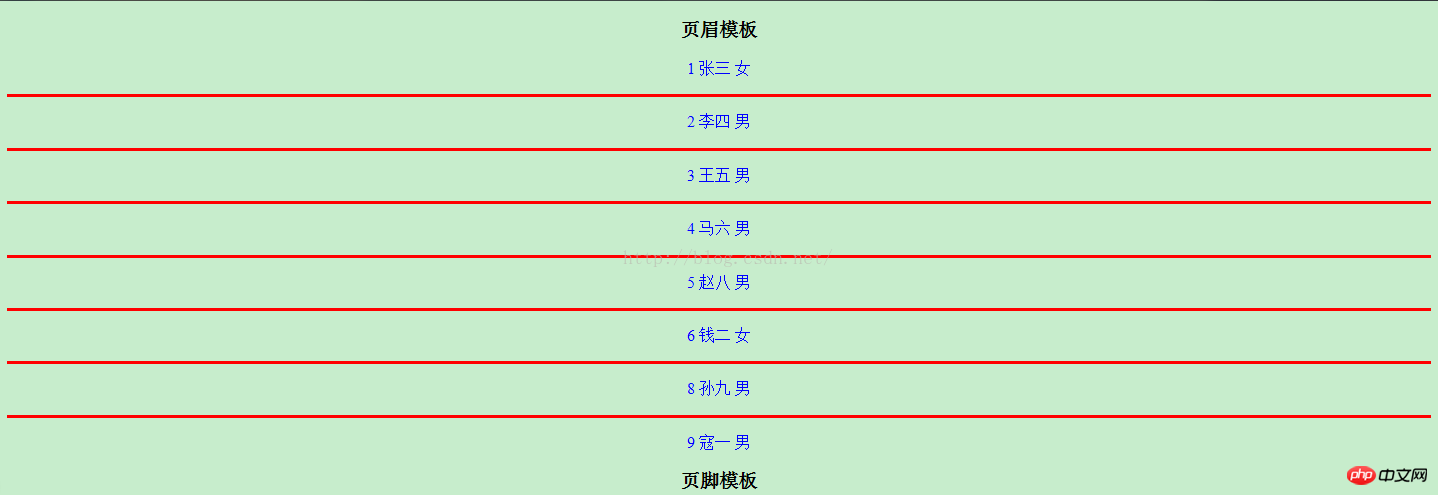Home >Backend Development >C#.Net Tutorial >'ASP.NET' data binding—Repeater graphic and text explanation
'ASP.NET' data binding—Repeater graphic and text explanation
- 黄舟Original
- 2017-03-08 11:57:472269browse
I have learned HTML static web page programming and understood some of its syntax, but I felt that my mastery of Web programming was not satisfying enough, so I followed the plan and started my ASP.NET journey. Before writing this ASP.NET blog, I would like to first compare the differences and connections between ASP.NET and HTML.
## 1. Connections and differences: HTML is programmed on the client side and usually generates static web pages; ASP.NET is programmed on the server side and can usually generate dynamic web pages. The controls in ASP.NET are redesigned and encapsulated from the controls in HTML. That is to say, the controls in ASP.NET are based on the controls in HTML. ASP.NET control has a callback function, which can use ViewState to maintain the state of the control. HTML controls cannot. When the page operation is clicked, its state will be lost.
In the learning process of ASP.NET, the learning and use of its controls account for a large part. Today, I will talk about the Repeater control. Use the control, use it to bind background data, and then display it on the client (browser)!
2. Repeater control
1. Purpose: Use templates to display data in a loop.
2. Included templates:
0fc5c90f257c8bbe709da427d559475b247b94fc9b32a7a895c80acdf798d00f Project template (the data inside is displayed normally)
91f4318f378aad8e526fb1a0e1ad17f9ba8dc1c1382ecc852825ac1c1e896c38 Staggered display template (the data bound inside is displayed staggered)f39c60179d8b52ab6f3e5c24ba8c9c5fba78506deea6335853d7bed475f148b8Footer template (edit footer)
## 6ee8e8fba390ed9254dc3617352f8932bfe02e37d1f380daaee4f86f8a9cde04Header template (edit header)
bb7d44475a161c1c3f17906b7a8d3f4e7e09ce6e2174b5bea8c3b03d02e6c13cSeparation Template (Insert intervals in the displayed data, such as horizontal lines, special symbols, etc.)
3. ExampleAn example I wrote using the ASP.NET Web Forms application of vs2012.
1. Content introduction
Select the information in the Person table in the database, and then use the Repeater control to display it on the client. The picture below is the information in the person table in my Sqlser database.
## Form, add the following code in the Page_Load event of the form.
protected void Page_Load(object sender, EventArgs e)
{
SqlConnection con = DB.createConnection();
SqlDataAdapter sda = new SqlDataAdapter();
string sql="select * from person ";
sda.SelectCommand = new SqlCommand(sql, con);
DataSet ds=new DataSet();
sda.Fill(ds, "per");
this.Repeater1.DataSource=ds.Tables["per"];
Repeater1.DataBind();
}# 2: Use the template of the control Repeater 0fc5c90f257c8bbe709da427d559475b41c8d8d6ecae5496ee6d632e371b5f9c Display the information, the code is as follows
<asp:Repeater ID="Repeater1" runat="server">
<ItemTemplate>
<p align="center">
<%# DataBinder.Eval(Container.DataItem,"pID") %>
<%# DataBinder.Eval(Container.DataItem,"personName") %>
<%# DataBinder.Eval(Container.DataItem,"personSex") %>
</p>
</ItemTemplate>
</asp:Repeater>
3: The display effect is as follows

<asp:Repeater ID="Repeater1" runat="server">
<AlternatingItemTemplate>
<p align="center">
<font color="blue"> <%# DataBinder.Eval(Container.DataItem,"pID") %>
<%# DataBinder.Eval(Container.DataItem,"personName") %>
<%# DataBinder.Eval(Container.DataItem,"personSex") %></font>
</p>
</AlternatingItemTemplate>
</asp:Repeater>
 ## Finally, I used the five templates together. The front-end code is as follows
## Finally, I used the five templates together. The front-end code is as follows
<asp:Repeater ID="Repeater1" runat="server">
<HeaderTemplate>
<h3 align="center">页眉模板</h3>
</HeaderTemplate>
<ItemTemplate>
<p align="center">
<font color="blue"> <%# DataBinder.Eval(Container.DataItem,"pID") %>
<%# DataBinder.Eval(Container.DataItem,"personName") %>
<%# DataBinder.Eval(Container.DataItem,"personSex") %></font>
</p>
</ItemTemplate>
<AlternatingItemTemplate>
<p align="center">
<font color="blue"> <%# DataBinder.Eval(Container.DataItem,"pID") %>
<%# DataBinder.Eval(Container.DataItem,"personName") %>
<%# DataBinder.Eval(Container.DataItem,"personSex") %></font>
</p>
</AlternatingItemTemplate>
<SeparatorTemplate>
<hr color="red" size="1" />
</SeparatorTemplate>
<FooterTemplate>
<h3 align="center">页脚模板</h3>
</FooterTemplate>
</asp:Repeater> The rendering is shown below

## This It is a method of using controls to display the information in the background database in the browser. In fact, not only the Repeater control, but also DataList, GridView, CheckBoxList, DropDownList, etc. can bind the information in the database and then display it in the browser. , I will introduce them one by one later, so stay tuned! !
The above is the detailed content of 'ASP.NET' data binding—Repeater graphic and text explanation. For more information, please follow other related articles on the PHP Chinese website!

